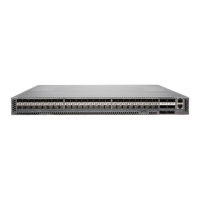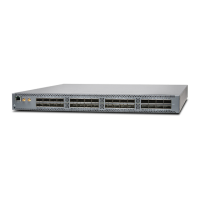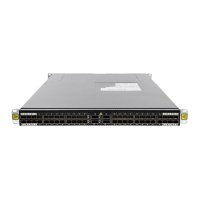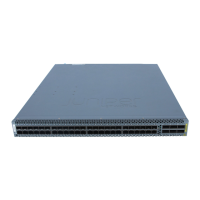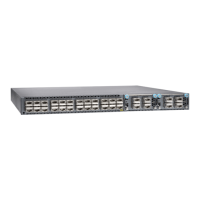Hardware-Based Routing Engines
A traditional Juniper Networks Routing Engine is a hardware field-replaceable unit that
runs routing protocols, builds the routing and switching tables, sends routing information
to the Packet Forwarding Engine, and handles several software processes for the device
(such as interface control, chassis component monitoring, system management, and
user access). Node devices that are part of server Node groups in the QFabric system
that connect to servers or storage devices implement Routing Engine functions locally
using this traditional hardware method.
Software-Based External Routing Engines
The QFabric system also uses external Routing Engines that run in software on the Director
group. In contrast with traditional Routing Engines, the functions and processes provided
by software-based Routing Engines are segmented, specialized, and distributed across
multiple Routing Engine instances running on the Director group. Such separation provides
redundancy for these functions and allows the QFabric system to scale. Figure 4 on
page 13 shows the external Routing Engine types.
Figure 4: External Routing Engine Types
Fabric control
Fabric manager
Network Node group
Fabric visualizer
Diagnostics
g041148
These special-purpose external Routing Engine instances running on the Director group
provide the following major services for the QFabric system:
•
Fabric manager Routing Engine—Provides services to all devices in the QFabric system,
such as system initialization, topology discovery, internal IP address and ID assignment,
and interdevice communication. The fabric manager Routing Engine authenticates
Interconnect and Node devices, and maintains a database for system components. A
single fabric manager Routing Engine instance is generated to manage the entire
QFabric system.
•
Fabric control Routing Engine—Runs the fabric control protocol to share route
information between available devices in a partition. A pair of redundant route
distribution Routing Engine instances are generated for every partition in the QFabric
system, and both instances are active.
•
Diagnostics Routing Engine—Gathers operational information which allows QFabric
system administrators to monitor the health of the QFabric system. A single Routing
Engine instance is generated for the entire QFabric system.
•
Network Node group Routing Engine—Provides Routing Engine functionality for groups
of Node devices bundled together as a single Layer 3 routing device, which is used to
13Copyright © 2012, Juniper Networks, Inc.
Chapter 1: QFX3000 QFabric Switch Overview
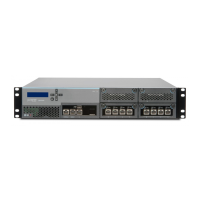
